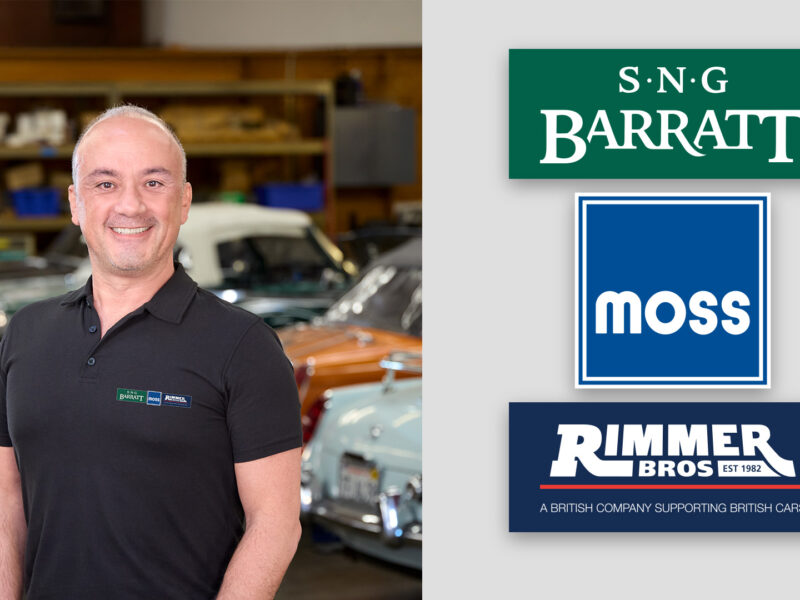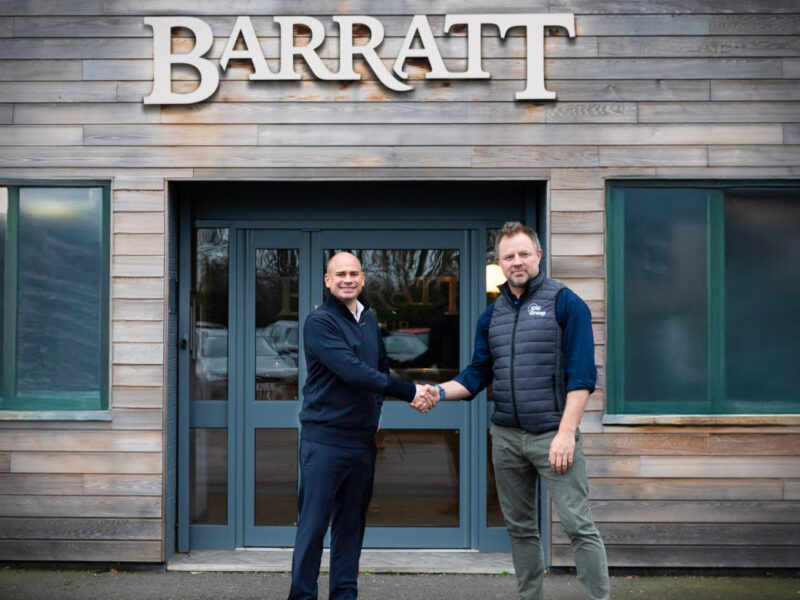One September afternoon in 1992, I was browsing through the August 31 issue of “Autoweek” magazine. What piqued my curiosity was a letter in rebuttal to an article in the July 27 “Autoweek” issue. That article claimed that a Devin-bodied special, currently being raced in vintage races, was the first Huffaker Special built. The letter to the “Autoweek” editors stated that the Devin-bodied special was not the first special sports racing car built by Joe Huffaker; but that the first special was a Healey-powered special completed in 1954 and raced through 1958 by Mick Marston. A photo of the car accompanied the letter, which was signed by Lou Pavesi.
Some years ago I was involved with a regional motorsports magazine, and one month, I did a filler on Lou Pavesi and his racing activities with the San Francisco region of the SCCA. I called Lou on the phone, and after some conversation, Lou provided me with Mick Marston’s phone number. A couple of phone calls later, I was on my way to visit Mick up in the hills of the California gold country, and spend a wonderful day of stories and home movies of the recorded campaigns of the Huffaker Healey Special.
Mick worked for San Anselmo BMC dealer E.F. Sweeny as a car salesman. Mick was there when the first Austin-Healeys arrived in 1953, and as one of Sweeny’s salesmen, he made a lot of North Bay residents happy owners of the very popular Austin-Healey 100. It was during this time Mick met Joe Huffaker. Joe was more interested in hot rods at the time, but was intrigued by Mick’s suggestion that they build a sports racing car together. In November 1953, Mick and Joe worked out sketches on the shape of the car and Joe laid out the basic chassis ideas for the car.
With a recently wrecked ’53 Austin-Healey 100 as a donor car, Joe began to fabricate the first Huffaker Special at his home in Novato. The front suspension was cut away from the Healey chassis and welded to a new tube chassis. The front suspension remained stock Healey, with the exception of the replacement of the BN1 anti-sway bar. The Healey steering box was used as is, but the steering shaft was articulated to allow a lower and more comfortable steering wheel angle in the cockpit.
A de Dion-type rear suspension was conceived and fabricated. A Ford differential with inboard brakes made from the rear brakes of the donor Healey was bolted to the chassis. Half-shafts were fabricated to drive the rear wheels. A torsion bar setup was mounted to the rear cockpit, and fuel tank supports and attached to the de Dion tube assembly. Rear shocks were attached to the rear cockpit hoop and then to the de Dion tube.
The engine was removed from the wreck, disassembled, and totally gone through. Chrysler pistons and special rods were used. The head was ported, relieved, and polished. The internal pans were lightened, polished, and balanced, and the engine reassembled.
The body was fabricated from aluminum, and it was the first time Joe had attempted such an undertaking. The body was formed without benefit of a body buck. None of the donor Healey panels were used in the fabrication of car. The final weight of the car was around 1,800 pounds. The car was ready to race in five months from the delivery of the tubing for the chassis on December 29, 1953. The first race for the car was at the Santa Rosa Rose Festival in May of 1954. Unfortunately, due to an overheating problem, the car did not finish its maiden race.
The San Francisco region of the Sports Car Club of America (SCCA) placed the car in Class D Modified. It had to compete with all modified racing cars with displacements ranging from 2000cc to 3000cc. This included Ferraris, Maseratis, and, a bit later, the Mercedes 300SL and the Austin-Healey 100S. The Huffaker Healey was at a disadvantage, but because of its power-to-weight ratio and torquey engine, it usually placed well in its class. The car was raced at such venues as Tracy, Buchanan Field, Cotati, Pebble Beach, the old Sacramento Fairgrounds, and Port Stockton. Marston raced the car, with moderate success, from May 1954 through 1958.
In the classified section of the January 1957 issue of “Road & Track,” Mick noticed an ad offering a special dual overhead camshaft head conversion kit available for the Healey. Harold W. Hunter, of Waterloo, Ontario, Canada, the designer/manufacturer of the heads, made some interesting claims about added horsepower (215 bhp at 6,000 rpm) and performance. Racing colleague Rod Carvath mentioned that he had been in a race on the east coast with a guy that had had this special head conversion on his Healey, and that the performance was outstanding.
The following month, Mick and racing buddy Dr. Tom Brandes, who drove a 100S, each purchased one of the special head conversions. They installed the head conversion kits and went racing. The first (and last) race for the cars with the twin-cam heads was at Stockton in April of 1957. Both drivers were sorely disappointed, as the addition of the Hunter twin-cam heads didn’t live up to the reports.
After the race, Mick and Tom tore the heads down and found a number of faults in the workmanship that contributed to its lack of performance. Oil passages in Mick’s car hadn’t been cleaned properly, and one of the cams did not get proper lubrication. In both cars, the timing was off, the cam followers were badly scored, and edges of the cam lobes had started to mushroom. The cams were tested for hardness and found to be inadequate for their intended application.
What followed was an endless amount of correspondence with Hunter that went unanswered, as did numerous phone calls. One of the head conversions was sent to Ed Iskendarin for evaluation, but there was nothing positive coming back from Los Angeles. Mick replaced the Hunter head with the regular profiled Healey head and continued to race the car through 1958.
Today, the Huffaker Healey Special resides with Lou Pavesi in San Jose. Lou found the Huffaker Special in 1981. The original engine had been replaced with a 289 cu Ford, so Lou began the car’s restoration the same year. He finished the Special to its original configuration, and since its completion has driven the car at many vintage racing events, including the Monterey Histories at Laguna Seca, California.
—Ron Yates, T.R.S.A.







'The Healey-Powered Huffaker Special' has no comments
Be the first to comment this post!